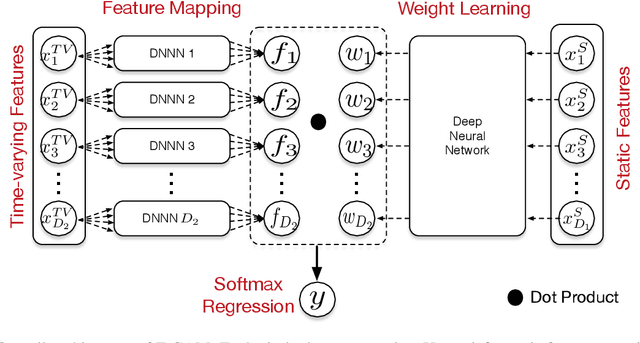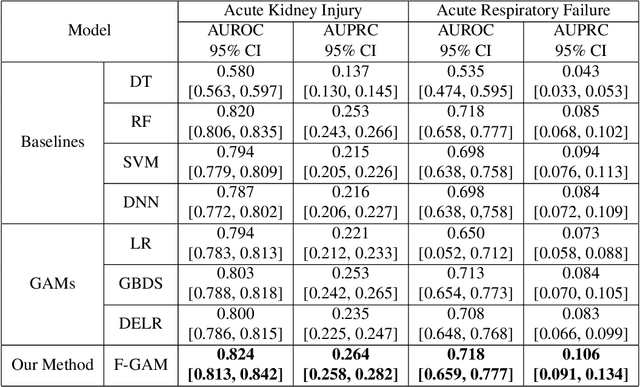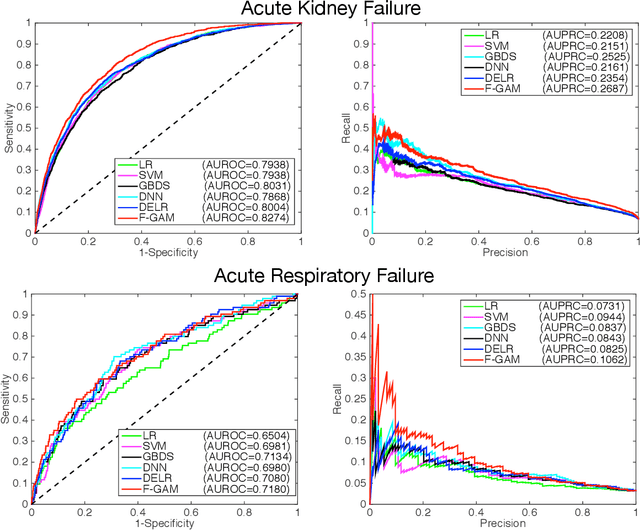Bradley A Fritz
Algorithmic Bias in Machine Learning Based Delirium Prediction
Nov 08, 2022Abstract:Although prediction models for delirium, a commonly occurring condition during general hospitalization or post-surgery, have not gained huge popularity, their algorithmic bias evaluation is crucial due to the existing association between social determinants of health and delirium risk. In this context, using MIMIC-III and another academic hospital dataset, we present some initial experimental evidence showing how sociodemographic features such as sex and race can impact the model performance across subgroups. With this work, our intent is to initiate a discussion about the intersectionality effects of old age, race and socioeconomic factors on the early-stage detection and prevention of delirium using ML.
A Factored Generalized Additive Model for Clinical Decision Support in the Operating Room
Jul 29, 2019



Abstract:Logistic regression (LR) is widely used in clinical prediction because it is simple to deploy and easy to interpret. Nevertheless, being a linear model, LR has limited expressive capability and often has unsatisfactory performance. Generalized additive models (GAMs) extend the linear model with transformations of input features, though feature interaction is not allowed for all GAM variants. In this paper, we propose a factored generalized additive model (F-GAM) to preserve the model interpretability for targeted features while allowing a rich model for interaction with features fixed within the individual. We evaluate F-GAM on prediction of two targets, postoperative acute kidney injury and acute respiratory failure, from a single-center database. We find superior model performance of F-GAM in terms of AUPRC and AUROC compared to several other GAM implementations, random forests, support vector machine, and a deep neural network. We find that the model interpretability is good with results with high face validity.
 Add to Chrome
Add to Chrome Add to Firefox
Add to Firefox Add to Edge
Add to Edge